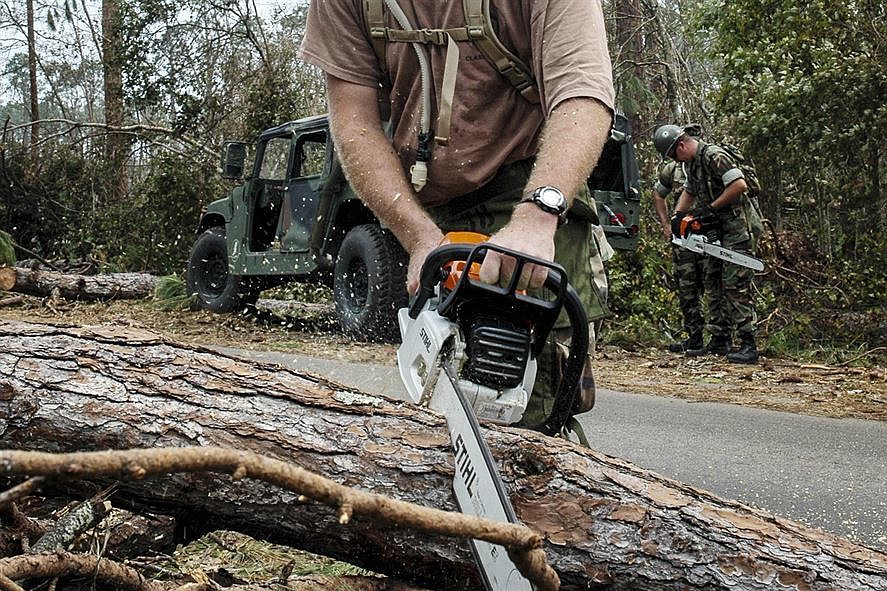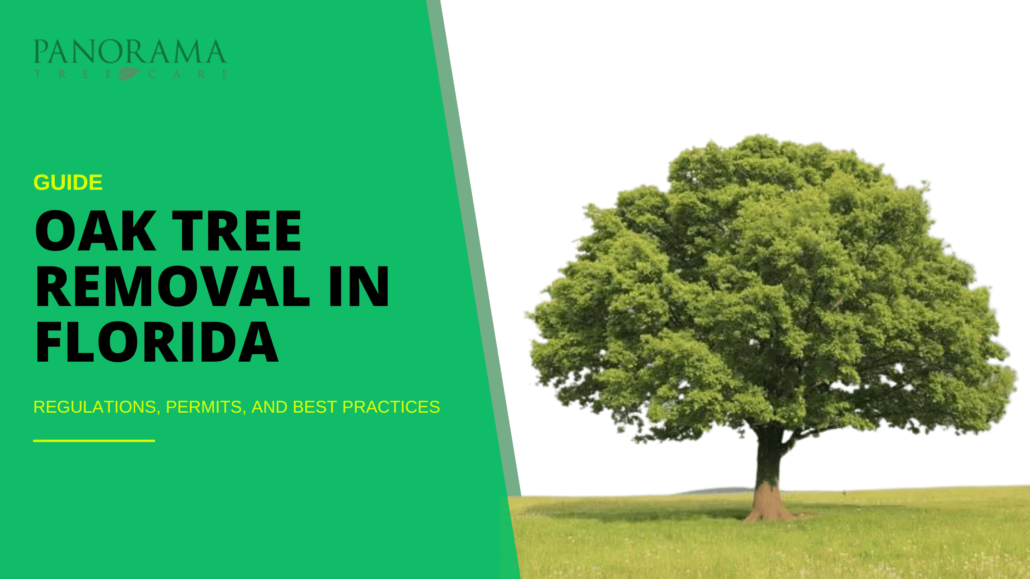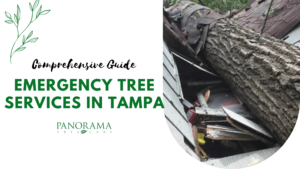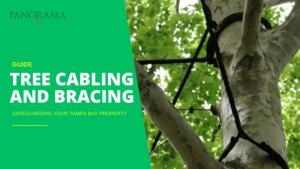Yes, you can remove an oak tree in Florida, but it’s subject to strict regulations. Most cities and counties require permits for oak tree removal, especially for larger or protected species.
You’ll need to check local ordinances, apply for proper permits, and potentially demonstrate a valid reason for removal, such as safety concerns or approved construction plans.
In some cases, you may be required to plant replacement trees.
Importance of Understanding Regulations Before Removal

Removing an oak tree without the proper permissions can lead to hefty fines and legal consequences. Regulations are in place to protect the environment and ensure that tree removal is done responsibly.
Knowing these laws helps you avoid legal trouble and contributes to the preservation of Florida’s natural beauty.
Legal Considerations for Oak Tree Removal in Florida
Florida’s Tree Protection Laws
Florida has specific laws to protect its trees, including oak trees. These laws are part of the Florida Statutes and are enforced by local governments.
The primary goal of these regulations is to preserve trees that provide significant environmental, aesthetic, and economic benefits.
These benefits include providing habitat for wildlife, improving air quality, and enhancing the visual appeal of neighborhoods.
Protected trees, especially larger and older ones, are often more regulated due to their higher value in terms of these benefits.
The laws outline the circumstances under which tree removal is allowed and the process for obtaining the necessary permits.
If an oak tree on your property is deemed to pose an “unacceptable risk” to persons or property, and you have the appropriate documentation from a certified arborist or a Florida-licensed landscape architect, this bill would allow you to prune, trim, or remove the oak tree without needing to obtain local government approval.
Source – flsenate.gov
Local Ordinances and Variations by County/City
In addition to state laws, local ordinances play a crucial role in tree protection. These ordinances can vary significantly from one county or city to another.
For example, some areas may have stricter rules regarding the removal of oak trees due to specific local environmental concerns or historical significance of the trees.
Local governments may have their own set of regulations detailing which trees are protected, the criteria for removal, and the permitting process.
This means that even if you comply with state laws, you must also adhere to local rules to avoid penalties.
It’s essential to check with your local municipality to understand the specific ordinances that apply to your area.
This might include contacting the local planning or environmental department or visiting their website for information on tree removal regulations.
By understanding both state and local laws, you can ensure that you follow the proper procedures and avoid any legal issues when considering the removal of an oak tree.
Protected Oak Species in Florida
Florida is home to several protected oak species, including:
- Live Oak (Quercus virginiana)
- Sand Live Oak (Quercus geminata)
- Chapman Oak (Quercus chapmanii)
- Myrtle Oak (Quercus myrtifolia)
Removing these species without proper authorization can result in hefty fines and legal consequences. It’s always best to consult with a certified arborist or local environmental agency to identify the species before taking any action.
When is Oak Tree Removal Permitted?
Safety Concerns
Safety is one of the primary reasons for permitting the removal of oak trees. Trees that are diseased, damaged, or structurally unstable can pose significant risks to people and property.
Here’s a closer look at why safety concerns can justify tree removal:
- Diseased Trees: Oak trees affected by diseases like oak wilt or root rot can become weak and prone to falling. Such diseases can spread to other healthy trees, making removal necessary to protect the surrounding vegetation.
- Damaged Trees: Severe weather events, such as hurricanes and storms, can cause substantial damage to oak trees. Broken branches, split trunks, and uprooted trees are hazards that need addressing. In these situations, removing the tree is often the safest option.
- Structurally Unstable Trees: Trees with significant structural issues, like large cracks or cavities in the trunk, can be dangerous. These trees are at high risk of falling, especially during high winds, posing threats to nearby buildings, vehicles, and pedestrians.
Construction and Development Reasons
Another common reason for oak tree removal is construction and development. However, this must be carefully managed to balance development needs with environmental conservation:
- New Construction: When building new homes, commercial properties, or infrastructure, existing oak trees might need to be removed to make way for the new structures. This includes clearing land for foundations, roads, and utility lines.
- Development Projects: Large-scale developments, such as residential subdivisions or commercial complexes, often require significant land clearing. In these cases, removing oak trees might be necessary to accommodate the project’s layout and design.
- Regulatory Compliance: Even when removal is necessary for construction, it is essential to comply with local regulations. This often involves submitting detailed site plans, conducting environmental impact assessments, and obtaining the appropriate permits.
Nuisance Factors
Sometimes, oak trees are removed due to nuisance factors, although this still requires adherence to local laws and obtaining permits:
- Size and Spread: Large oak trees can outgrow their location, with branches extending over homes, driveways, and power lines. Their expansive root systems can also damage sidewalks, driveways, and underground utilities.
- Mess and Maintenance: Oak trees can produce a significant amount of debris, including leaves, acorns, and branches. This can create additional maintenance work and potentially cause damage to property. For example, fallen acorns can damage roofs or clog gutters.
- Allergens: For some homeowners, oak trees can be a source of allergens, leading to health issues. In such cases, removal might be considered to improve the quality of life for the residents.
Obtaining Permits for Oak Tree Removal
Removing an oak tree in Florida requires a permit from local authorities to ensure that the removal is justified and environmentally responsible. Here’s a detailed look at the permit application process:
Step-by-Step Guide to the Permit Application Process
- Contact Local AuthoritiesThe first step is to reach out to your local city or county office. This can usually be done through the municipal website, by phone, or by visiting the office in person. The local authorities will provide you with the specific requirements and procedures for obtaining a tree removal permit in your area.
- Submit an ApplicationYou will need to fill out an application form provided by the local authorities. This form typically requires detailed information about:
- The location of the tree.
- The species and size of the tree.
- The reason for removal (e.g., safety concerns, construction, nuisance).
- Any supporting documentation such as photographs of the tree’s condition.
- InspectionAfter submitting the application, a city official or a certified arborist will likely need to inspect the tree. This inspection verifies the information provided in the application and assesses the tree’s condition. The inspector may look for signs of disease, damage, or structural instability.
- ApprovalIf the application and inspection support the removal, you will receive a permit. The permit is a legal document allowing you to proceed with the tree removal. Make sure to keep this permit on hand during the removal process, as you may need to present it to authorities if questioned.
Required Documentation and Fees
To complete your permit application, you will typically need the following documents:
- Proof of Property Ownership: This can be a property deed, tax bill, or any official document showing you own the property where the tree is located.
- Site Plan: A detailed map or drawing showing the tree’s location on your property. This helps officials understand the tree’s impact on the surrounding area.
- Tree Condition Report: Details about the tree’s health and reasons for removal. This could include photos or an arborist’s report.
- Application Fee: Most local authorities charge a fee for processing the permit application. The fee amount can vary, so it’s important to check with your local office for specific costs.
Timeframes for Approval
The approval process can vary depending on the complexity of the case and the local government’s workload. Here’s a general idea of what to expect:
- Simple Cases: For straightforward removals, such as a clearly diseased or damaged tree, the approval process can take a few days to a week.
- Complex Cases: If the tree is in a protected area, or if there are objections or concerns from neighbors or local environmental groups, the process can take several weeks. In these cases, additional documentation or hearings may be required.
Alternatives to Oak Tree Removal
Trimming and Pruning Options
Instead of complete removal, consider trimming or pruning the tree. This can address safety concerns or nuisance factors while preserving the tree’s ecological benefits.
Root Barriers and Other Mitigation Techniques
Installing root barriers can prevent oak tree roots from damaging nearby structures without removing the tree. Other techniques include using fertilizers and soil treatments to improve tree health.
DIY vs. Professional Oak Tree Removal
Risks and Challenges of DIY Removal
Removing an oak tree yourself might seem like a way to save money, but it comes with a lot of risks and challenges:
- Safety Hazards: Tree removal involves dealing with heavy branches and large trunks, often at significant heights. Without proper training and equipment, I could easily get injured by falling branches, chainsaw accidents, or falls.
- Improper Equipment Use: Professional tree removal requires specialized tools like chainsaws, ropes, pulleys, and sometimes cranes. Using this equipment without proper training is not only dangerous but also likely to be ineffective.
- Potential Property Damage: If I incorrectly fell a tree, it could damage nearby structures, vehicles, or utility lines. The costs of repairing such damages can far outweigh the savings from DIY removal.
- Legal Issues: Removing an oak tree in Florida requires a permit. If I don’t obtain the necessary permits or fail to follow local regulations, I could face hefty fines and legal trouble.
- Disposal Challenges: Once the tree is down, dealing with the disposal of large amounts of wood and debris is a challenge. Improper disposal can also have legal and environmental repercussions.
Instead of taking the risk, trust our oak tree removal experts in Tampa who understand every legal, safety, and environmental consideration.
Benefits of Hiring Certified Arborists
Hiring a certified arborist, like those at our company, Panorama Tree Care, offers several advantages:
- Expertise and Training: Certified arborists have undergone extensive training and certification processes. They understand tree biology, proper pruning techniques, and safe removal practices. This expertise ensures the tree is removed safely and efficiently.
- Proper Equipment: Professional tree removal services have access to the latest tools and equipment. This includes heavy-duty machinery that can handle even the largest oak trees without risking safety or property damage.
- Regulatory Compliance: Certified arborists are familiar with local regulations and permitting processes. They can handle all the necessary paperwork and ensure compliance with Florida’s tree protection laws, minimizing your legal risks.
- Insurance and Liability: Professional tree service companies are insured. This means that if anything goes wrong during the removal process, you are protected from liability and potential costs associated with accidents or damages.
- Efficient Disposal: Professional services handle the entire removal process, including the disposal of tree waste. They have the means to recycle or dispose of the wood and debris in an environmentally responsible manner.
As a leading oak tree service company in Tampa, we combine safety, compliance, and ecological care for every project.
Cost Considerations
While hiring a professional tree removal service might seem more expensive initially, it often proves to be a better investment in the long run:
- Avoiding Fines: Ensuring regulatory compliance avoids potential fines and legal fees associated with unauthorized tree removal.
- Preventing Property Damage: Professionals minimize the risk of damage to your property, which can save you significant repair costs.
- Saving Time and Effort: Professional services complete the job quickly and efficiently, saving you time and the physical effort involved in DIY removal.
- Insurance Coverage: The insurance coverage provided by professional companies protects you from any liabilities, potentially saving you thousands in unexpected costs.
As a tree service company, Panorama Tree Care understands the unique challenges and regulations involved in oak tree removal in our area.
Our team of certified arborists is equipped with the knowledge, skills, and tools to safely and efficiently handle tree removals, ensuring compliance with all local laws and regulations.
We prioritize safety, environmental responsibility, and customer satisfaction, making us the trusted choice for tree services in Tampa bay area.
Environmental Impact and Mitigation
Ecological Role of Oak Trees in Florida
Oak trees provide habitat for numerous species and help maintain the ecological balance. Their removal can have significant environmental impacts, which is why mitigation efforts are important.
Tree Replacement Requirements
Some areas may require you to plant new trees to replace those that are removed. This helps maintain the local tree canopy and ecological health.
Native Alternatives for Replanting
Consider planting native species as replacements for removed oak trees. Native trees are well-suited to the local environment and provide similar ecological benefits.
FAQ
1. Do I always need a permit to remove an oak tree?
Yes, most cities and counties in Florida require a permit for oak tree removal.
2. What happens if I remove a tree without a permit?
You could face significant fines and legal action.
3. Can I trim an oak tree without a permit?
Trimming and pruning usually do not require a permit, but it’s best to check with local authorities.
Conclusion
Understanding the regulations and procedures for oak tree removal in Florida is crucial for responsible tree management.
By following local laws, obtaining the necessary permits, and considering alternatives, you can ensure that any tree removal is done safely and responsibly.
Ready to remove or preserve an oak tree legally and safely? Schedule your oak tree consultation today and let our certified Tampa arborists walk you through the process with confidence.








One Response
My HOA removed our beautiful oak trees without permits. On three different occasions. The third occasion was last Friday, November 22, 2024. They were beautiful, provided a habitat for our birds, squirrels, ducks, and sometimes hawks. Now it is barren, ugly, hot, and no place for our nature, all for the sake of hatred and not wanting to spend money on the upkeep. There are 270 homes here at Bay Breeze Cove and we all pay $360.00 a month. I am outraged, because one of those beautiful oak trees was mine and I am heartbroken. I have lived here for 17 years and they just destroy my home and are destroying our community. We are losing our animal habitat because they are animal haters. They are using the hurricane excuse saying the City of St. Pete. is allowing them to do this because of debris and dead trees caused by the hurricanes. These beautiful oak trees were not dead, they were very much alive and vibrant. Three trees at our entrance were beaten up from the last hurricane, “Milton”, but the other oak trees they cut down including mine were alive, beautiful and they broke the law!!! This HOA bullies and threatens and there needs to be justice, they think they are above the law. I am also seeking legal counsel to file charges against them! They have threatened me and targeted me for protecting the animals and our nature.